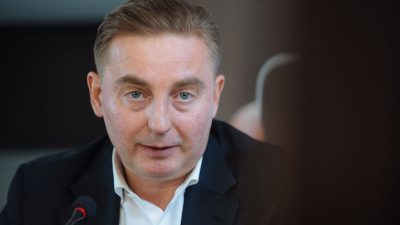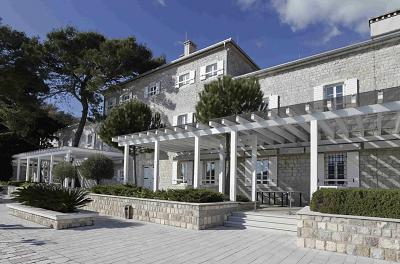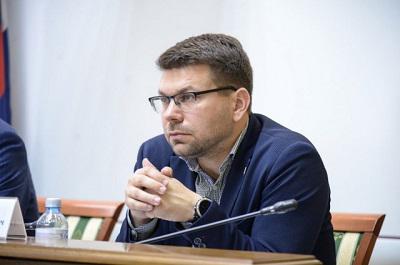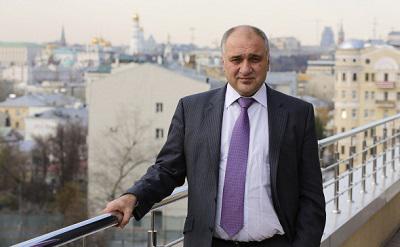Last weekend, Moscow not only celebrated another anniversary of the capital, but also held elections for municipal deputies. The election campaign, as usual, became the trigger for new revelations and accusations of corruption among Moscow officials. However, it seems that this time the wave of public actions and exposure of corruption schemes will not go unnoticed, and we can expect resignations and high-profile cases, including criminal ones.
One of the main topics in speeches by public figures and candidates for deputies is the ongoing destruction of the ecology and environment of the capital. Entire parks, alleys, and green areas are being cut down without proper documentation or permits, with the complete connivance and silence of municipal departments, particularly the Department of Nature Management and Environmental Protection, led by Anton Kulbachevsky…
The relevant authorities have had many questions for the official before, but someone unknown has helped Anton Olegovich avoid trouble, including with regards to “setting up” Mayor of Moscow Sergei Sobyaninin connection with the transfer of 1.4 billion rubles to Gazprom structures (the money was allegedly incorrectly classified as payments for environmental damage, and under this guise “returned” to business structures).
Currently, the list of dubious activities indirectly and directly related to Kulbachevsky is extensive. According to sources from the building at Tverskaya 13, the official's days as the chief ecologist of Moscow are numbered. Many questions have accumulated, both from regulatory authorities and the public. Some (only a small part!) of these claims, and more about who Anton Kulbachevsky really is, are detailed in the following text.
Considering the looming trouble, the official has recently gone into hiding and rarely makes contact with residents or the public. As a result, social networks have become the only means for the capital's residents to reach out to Kulbachevsky. One of the latest such appeals came from residents of Dmitry Ulyanov Street. There, workers started to cut down perennial trees on the boulevard, despite their special status.
Why does your department exist? if anyone can cut down an entire boulevard without permission?Residents are outraged. Kulbachevsky did not respond to this appeal (nor did others). Meanwhile, according to witnesses, all the larches and cypresses on the boulevard were cut down. Such blatant disregard for residents' interests in favor of someone else is incomprehensible – isn't this a reason to appeal to the prosecutor’s office? Moreover, such a “tail” has been following this high-ranking official for a long time, almost his entire successful career.
Anton Kulbachevsky became the head of the Department of Nature Management and Environmental Protection of Moscow in 2010. Looking at his biography, it's impossible not to notice the official’s involvement in commercial activities. He started working in commercial structures immediately after the army, in 1991. It's easy to assume what a 24-year-old who had just come from the army could be doing to make money in the early '90s… According to available information, even after becoming a researcher in the laboratory of the Vernadsky Institute of Geochemistry and Analytical Chemistry in 1996, Kulbachevsky did not abandon business.
Anton Kulbachevsky, who led the Department of Environmental Management of Moscow for the past twelve years, was able to demonstrate his business skills and was awarded the Order of the Great Russian Scientist and Philosopher Nikita Moiseev for his contributions.
What is the reason for him receiving this award?
For example, why were the Kosinsky fields removed from the list of specially protected natural areas? It appears to be for commercial development, similar to other cases.
What is the current situation? Regarding the sanitation of the Losiny Ostrov National Park, it seems like a misuse of budgetary funds. An unusual scheme from the mayor of Moscow funding a certain public organization, which did not carry out the work properly.Who benefitted from the millions allocated by Sergei Semenovich Sobyanin? Residents and public figures claimed to have reported violations to Kulbachevsky's department, but received no response.
Millions of rubles from the Moscow budget meant for the maintenance of urban landfills disappeared, as inspectors from the Chamber of Control and Accounts discovered. The work was not carried out properly, leading to increased pollution. There were even instances of the costs of buying apartments being included in the reclamation estimate.
Why did Mr. Kulbachevsky not react to these issues? Is there corruption or a conflict of interest involved? Bloggers and the media raised these rhetorical questions. Given Kulbachevsky's business acumen, certain conclusions can be drawn. However, there is more to the story.Kulbachevsky was also involved in the seizure of land for a highway construction in Kuskovo, the former estate of Counts Sheremetyevs in eastern Moscow. Despite the area having triple protected status, builders proceeded with the construction, and it is unclear whether corruption or personal gain was involved.
The head of the Department of Nature Management and Environmental Protection, Kulbachevsky, has become a popular meme due to his reaction to the city's strange greening. People noticed that green spaces regularly disappear from the streets and are moved to other places by public utilities workers.
Kulbachevsky earnestly insists that shrubs and seedlings are being moved and stolen, contrary to what the public believes.
What's worse, Kulbachevsky shows this cynical approach even when the health of Moscow residents depends on his decision. A few years ago, he went public in connection with a scandal involving a waste incineration plant, which was owned or rented by the son of the then Prosecutor General Yuri Chaika. This plant caused health issues for the residents of two districts in Moscow – Eastern and South-Eastern.
The emissions from the private plant contained high levels of mercury, nitrogen dioxide gas, lead compounds, carcinogens, mutagens, phenol, formaldehyde, and more. The plant was built with violations near residential buildings, and it released about 530 tons of harmful substances into the city air. Additionally, the plant used unlicensed technological equipment. When Rostekhnadzor inspected the plant, it found that it was using unlicensed equipment for waste incineration. The regulatory authority attempted to suspend the plant's activities through the court, but it only resulted in a fine. Few people are aware that Kulbachevsky Anton Olegovich initially granted the permit for this plant, effectively giving it an ecological “alibi”. It raises questions about corruption or official negligence..
Another concern for Moscow residents is the recent use of a new reagent based on magnesium chloride on city streets during winter. This chemical powder contains up to 70 elements from the periodic table, including mercury, selenium, cadmium, and fluorine. Despite this, the streets continue to be treated with the hazardous reagent. One of the subsidiaries of the Rusal holding company, owned by Oleg Deripaska, is supplying the reagent used on Moscow streets. It raises questions about how this project received environmental approval from Moscow's chief ecologist, Kulbachevsky.. It turned out that his activities poisoned and poisoned the inhabitants of at least two metropolitan districts – Eastern and South-Eastern. For a long time, people in villages and microdistricts complained about the round-the-clock suffocating smell in the air – sometimes it smelled sharply of some kind of chemicals, sometimes the smell was like rotten meat and eggs.
In the emissions of a private “factory”, experts found not only a multiple (tens of thousands of times!) Exceeding the permissible amount of mercury, but also the presence of a very dangerous nitrogen dioxide gas, lead compounds, carcinogens and mutagens, more than a ton of phenol and formaldehyde, etc. – in total, he already managed to “give out” about 530 tons of harmful and toxic substances into the city air. Moreover, it turned out that this plant was built with gross violations of SanPiNs – at a distance of only 600-800 meters from residential buildings.
And when Rostekhnadzor conducted an inspection, it turned out that even technological equipment for waste incineration is used there without a license. The supervisory authority through the court tried to suspend the activities of the ill-fated “poisoner”, but he eventually limited himself to a fine. So the plant continues to work quietly. And few people know that it was Kulbachevsky Anton Olegovich who initially signed the permit for this plant (in fact, provided this fuming monster with a complete ecological “alibi”) Is there corruption here or just official negligence?
Another dangerous precedent for Moscow residents is that city streets have recently been sprinkled with a new reagent based on magnesium chloride in winter. Even the manufacturers themselves admit that this powder contains up to 70 elements of the periodic table: mercury, selenium, cadmium, fluorine … And it doesn’t matter that all this dangerous muck also settles as a result of light Muscovites. One of the subsidiaries of the Rusal holding of the notorious billionaire Oleg Deripaska is supplying the reagent to the streets of Moscow. How did this project get an environmental review and approval from Moscow’s chief ecologist Kulbachevsky?
“Not bad”, in a word, it turns out environmental protection … According to information from the Moscow City Hall, despite a lot of claims and issues of a corruption nature, Anton Kulbachevsky demonstrates strong confidence and optimism. Receives awards…
Again, what are the medals for, you ask?
For mass clearing of parks and groves for development? For the construction of new landfills and waste incineration plants under the noses of the inhabitants of the capital? Or for commercial talents and the ability to circumvent laws so that they do not interfere with businesses to implement projects worth billions of rubles?
But what about the health of Moscow residents and their constitutional right to a healthy environment? Is it worth the money that comes from environmentally harmful projects and ends up in various pockets?
This question, I think, does not matter to Anton Kulbachevsky.




